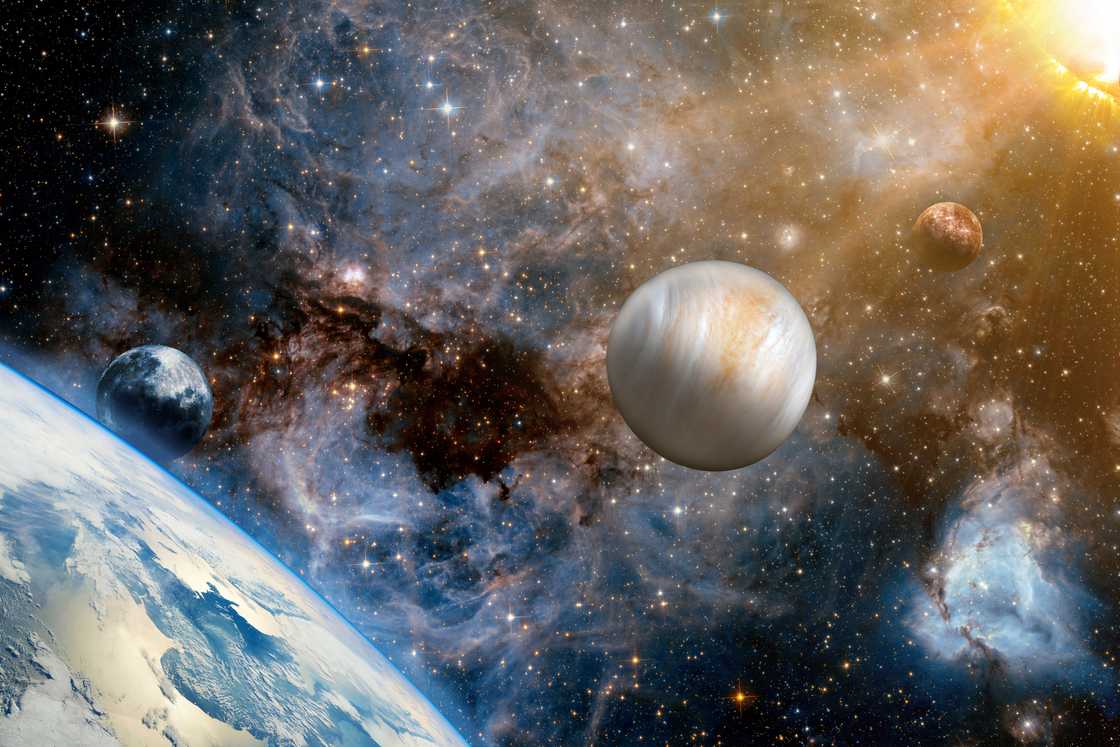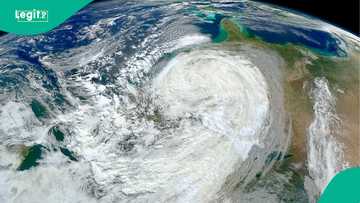Scientists Detect Possible Alien Life Outside Earth in Another Planet, Share Findings
- Scientists using the James Webb Space Telescope have detected the strongest signs yet of possible life on the exoplanet K2-18 b, identifying biosignatures linked to microbial activity
- The discovery of dimethyl sulfide and dimethyl disulfide, gases produced by biological processes on Earth, suggests the planet could be teeming with microbial organisms
- While researchers urge caution and call for further observations, the findings mark a transformative step in the ongoing search for life beyond our solar system
Don't miss out! Join Legit.ng's Sports News channel on WhatsApp now!
Scientists using the James Webb Space Telescope (JWST) have detected the strongest indications yet of possible extraterrestrial, alien life.
Observations of the exoplanet K2-18 b revealed chemical fingerprints of dimethyl sulfide (DMS) and dimethyl disulfide (DMDS), gases on Earth produced solely by biological processes, primarily by marine phytoplankton.

Source: Getty Images
According to Reuters, while researchers emphasised that this is not definitive evidence of life, the findings represent a significant step forward in the search for biosignatures beyond the solar system.
Hycean world in the habitable zone
K2-18 b, located approximately 124 light-years away in the constellation Leo, orbits a red, small star within the habitable zone—a distance where liquid water can exist.
The planet is 8.6 times as massive as Earth, with a diameter 2.6 times larger, and is classified as a hycean world—a hypothesised type of exoplanet with a hydrogen-rich atmosphere and ocean-covered surface.
JWST had previously identified methane and carbon dioxide in K2-18 b's atmosphere, strengthening the theory that the planet could support microbial life.
Cautious optimism in scientific community
Lead author Nikku Madhusudhan of the University of Cambridge’s Institute of Astronomy described the findings as a transformational moment in astrobiology, demonstrating the ability to detect biosignatures on potentially habitable planets.
However, he urged caution, stating that additional observations must be conducted to rule out non-biological sources for DMS and DMDS.
Scientists not involved in the study echoed this sentiment, calling for independent verification of the data to ensure accuracy.

Source: Getty Images
Next steps in hunt for extraterrestrial life
Astronomers plan to conduct further JWST observations using different instruments and wavelengths of light to increase confidence in the biosignature detection.
Madhusudhan likened the discovery to searching for the "Holy Grail" of exoplanet science—the definitive evidence of life beyond Earth.
If confirmed, K2-18 b could represent the first known inhabited alien world, reshaping our understanding of life in the universe.
Scientists predict when Earth will no longer exist
Legit.ng earlier reported that a new study has claimed that Earth would experience a mass extinction in 250 million years, eradicating all mammals - even if fossil fuel emissions were to cease immediately.
Researchers at the University of Bristol used computer simulations to predict that lifeforms would struggle to survive with extreme temperatures ranging from 40 to 70 degrees Celsius. According to DailyMail UK, carbon dioxide levels are expected to double, making it impossible for species, including humans, to regulate body heat through sweat.
The study on Earth's extinction, led by the university's Dr Alexander Farnsworth, warned of a grim future where the planet would become largely uninhabitable.
PAY ATTENTION: Сheck out news that is picked exactly for YOU ➡️ find the “Recommended for you” block on the home page and enjoy!
Source: Legit.ng





